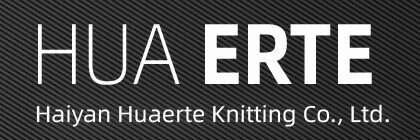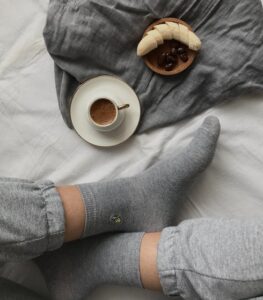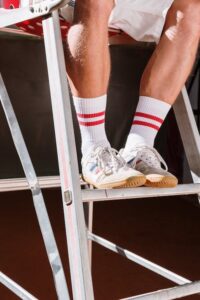As temperatures continue to rise, many socks advertised with antiodor and antibacterial functions are very popular on the market. Can these socks really be anti-odor and anti-bacterial? How should consumers choose? Recently, experts from China Textile Standard Co., LTD. (hereinafter referred to as “China Textile Standard Co., LTD.”) visited the “Life Tips” column of CCTV-1 comprehensive channel to discuss these issues with you.

Photo by congerdesign on Pixabay
01
Whether “copper fiber”, “silver fiber” and so on really have natural anti-bacterial and deodorant functions?
Now there are a lot of deodorant socks sold on the e-commerce platform. Many of them claim that the antibacterial rate is >99%, the smelly feet are guaranteed to return, and the socks are not washed for 7 days. The claimed anti-bacterial technology is mainly copper fiber, silver fiber and so on have natural anti-bacterial and deodorant functions; using nano silver ion technology antibacterial and deodorant; through mesh breathable to achieve antibacterial, deodorant and so on.
Ren Hang, senior engineer of Testing Division of China Textile Standard Company explained: The so-called “silver fiber” or “copper fiber” is not actually silver or copper wire, but textile fiber using antibacterial agents containing silver or copper ions processed into antibacterial fibers, silver ions or copper ions attached to the surface of the fiber, when bacteria and silver or copper ions contact, its cells lose activity or even die, so as to achieve antibacterial effect.
As long as it is tested and meets the index requirements of GB/T 20944, FZ/T 73023 and other textile related antibacterial standards, it can have certain antibacterial function. but whether it also has the function of antiodor, that is not necessarily, smell is because of human sweating, sweat and skin surface microbes produce some odor gas, but there will be a lot of bacteria or fungi on the surface of our skin, the microorganisms that produce odor in the end. What kind of bacteria? There is no clear answer.
02
Are there socks that actually deodorize?
Bacteriostasis does reduce some of the odors that socks produce to some extent. GB/T 20944.1-3 is a series of national standards for antibacterial property evaluation of textiles, which stipulates three methods for antibacterial property evaluation of textiles. For example, GB/T 20944.3 stipulates that when the antibacterial rate of Staphylococcus aureus and Escherichia coli or candida albicans is greater than 70% or 60%, it indicates that the sample has antibacterial effect.
According to the need, you can also check the antibacterial effect after a certain number of washing. Industry standard FZ/T 73023 Antibacterial knitwear The antibacterial knitwear is divided into three antibacterial levels: grade A, grade AA and grade AAA according to the washing resistance times and the bacteria tested, among which the washing resistance times of grade AAA is 50, and the bacteria tested are Staphylococcus aureus, Escherichia coli and Candida albicans.
If socks that claim to be antibacterial meet AAA antibacterial standards, that means they inhibit all three bacteria and prevent some of the odors. However, due to the limited bacteria required by the antibacterial standard, good antibacterial effect does not mean that it has good deodorant and deodorant function.
Are there any socks that actually deodorize?
Ren explained: There are actually ways to eliminate the resulting odor, through physical or chemical methods to achieve adsorption or reaction in this way. The main components of sweat flavor are acetic acid, isovaleric acid, and ammonia, etc., through the GB/T 33610 series standard test, and in line with the standard indicators of the product should be said to have a certain deodorization effect.
03
There are also claims online that cotton socks are actually more likely to stink feet.
But is it really the case?
Ren Hang explained: socks smelly feet, not mainly depend on the material, and socks sweat absorption, air permeability, thickness of socks, structure and so on have a certain relationship, but also with the wearer’s own degree of sweating, in addition to the shoe material is breathable, so do not necessarily say that pure cotton socks are smelly feet.
04
How to evaluate deodorant socks?
Since there is no relevant standard to measure the relationship between anti-bacterial rate and deodorant performance of textiles, antibacterial function does not mean that textiles have deodorant function even if they meet the above standards. At present, to evaluate the deodorization performance of textiles, the relevant deodorization and deodorization standards such as GB/T 33610.1-2019 series standard for the determination of deodorization performance of textiles can be followed.
GB/T 33610.1-2019 lists odor types, chemical composition of each odor (see Table 1 below), and assessment indicators of odor chemical composition (see Table 2). The specific test methods are GB/T 33610.2-2017 “Determination of textile deodorant properties Part 2: Detection tube method” and GB/T 33610.3-2019 “Determination of textile deodorant properties Part 3: gas chromatography”.
Deodorization test is to cut the sample to a certain size, after the standard atmospheric environment humidification, put the sample bag or conical bottle in contact with the specified concentration and volume of odor gas for a certain time, test the odor chemical composition concentration in the sample bag or conical bottle with and without samples, and calculate the odor chemical composition concentration reduction rate.
Take sweat smell as an example, as long as a textile product on ammonia concentration reduction rate ≥70%, acetic acid concentration reduction rate ≥70%, isovaleric acid concentration reduction rate ≥85%, then this textile has the function of eliminating sweat odor.
Deodorant textiles are not only used for socks, but also for other textile products, such as underwear, insole, helmet lining and so on. Consumers are reminded that if they want to buy textiles with deodorant properties, they need to check whether the product instructions have marked GB/T 33610.1-2019 and other relevant textile deodorant performance evaluation standards, and have a test report proving that they meet the standard requirements.
Welcome to consult us to make your custom socks.





